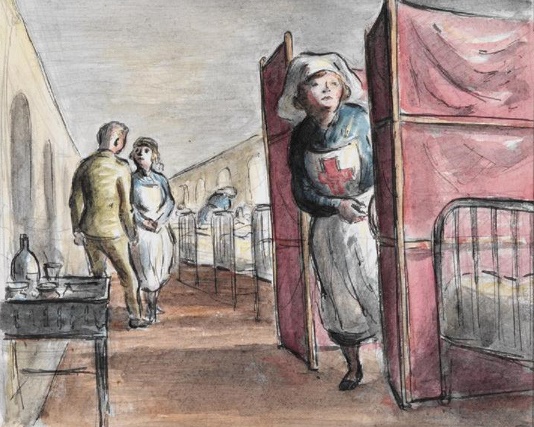The Overlooked Productivity Costs of Collaboration
This is one of our free-to-access content pieces. To gain access to all Ideas for Leaders content please Log In Here or if you are not already a Subscriber then Subscribe Here.

While management theorists and business leaders trumpet knowledge sharing and other advantages of collaboration, new research shows that workforce collaboration also comes with ‘spillover’ time-related costs that hurt productivity. These costs, however, can be managed.
Collaboration, either formal or discretionary (informally approaching others for guidance, information or assistance), is considered a virtue in today’s workplace. The advantages of collaboration are many, ranging from creativity and knowledge sharing, to teamwork, employee engagement and improved long-term results.
However, an in-depth study of the interaction of physicians and health care personnel in one hospital revealed the downside of collaboration, especially discretionary collaboration.
Physicians engage in individual activities, such as visiting patients and making diagnoses, but also collaborative activities, including consulting with other health care professionals to guide treatment or offer advice. The physicians at the heart of the study were hospitalists, who spend their days visiting a certain number of assigned patients, updating their charts and deciding on the next steps in their care. The work is both individual and collaborative. Collaboration occurs as the hospitalists communicate with pharmacists, nurses, specialists and other resources to make the correct decisions and guide next steps. For example, a hospitalist communicates directly with a resource such as a nurse or a pharmacist; collaboration with a specialist (for example, the hospitalist may have a question for a cardiologist off-site) will be more involved, requiring the hospitalist to send a text and wait (while pursuing other activities) for a response. In addition to these self-initiated collaborations are the ‘interruption’ collaborations, when another member of the medical staff interrupts the hospitalist with a question or request.
A team from Northwestern University’s Kellogg School of Management and Feinberg School of Medicine observed and recorded the activities of four hospitalists at Chicago’s Northwestern Memorial Hospital. The collected data covered 235 patient-day cases over 17 days. The observations were recorded digitally and in detail: each minute of the observed activity was accounted for. This allowed the researchers to log all of the time required by each collaborative effort, including the time resulting from what they termed as spillover.
For example, a 20-minute discussion with the cardiologist takes 20 minutes of the hospitalist’s time. However, if the hospitalist is in the middle of updating a patient’s chart, he will stop writing to take the call from the cardiologist. After the call, he will pick up the chart again and have to review where he was, think about what he was going to say, and continue writing. Because the chart was pre-empted by the cardiologist’s phone call, it takes 8 minutes to write instead of the usual 5 minutes (these extra 3 minutes are labelled as a pre-emptive effect). The 10-minute conversation may also lead to the hospitalist taking two minutes to add the cardiologist’s recommendation to the original patient’s chart — more spillover (labelled as communication effect) from the conversation with the cardiologist.
The data collected incorporated all of the ‘collaboration effects’, including the core of the collaboration (the discussion, for example) and any spillover time. Analysing the data, the researchers determined that collaboration most impacted the hospital’s productivity through communications and task pre-emptions. By crunching the numbers in the data, the researchers identified a collaboration productivity multiplier of 1.2 — thus a 10-minute collaboration requires 12 minutes of time because of the spillover effect. To put it another way, the hospital has a potential for up to 20% increase in productivity if it can limit spillover effects. The researchers were able to further breakdown the total 20% spillover effect into 5% as communication effects and 9% as work-sequencing effects (e.g. pre-emptive effects).
The data study offers a guideline for some corrective measures to reduce inefficient collaboration effects. For example, the data shows that interrupting the writing of patient charts leads to inefficiencies. One answer to this work-sequencing problem might be to batch the patient updates — writing and finishing a number of updates — before stopping to either answer or ask questions.
Communication effects could also be reduced through the standardization of content and format of medical charts. For example, it may take less time to add a specialist’s recommendations if there was a standard location for specialist recommendations on the chart.
Northwestern Memorial offers a specific example of how process improvements can reduce unproductive collaborative effects. Every morning at 10 a.m., doctors and nurses meet to exchange information on shared patients. The meeting serves to batch collaborative exchanges at the beginning of the day, and thus prevent pre-emptive interruptions throughout the day.
Collaboration should be encouraged — but it can also be managed better to reduce unwanted inefficiencies. Spend some time in your organization identifying unproductive spillover effects, and look for solutions to reduce each effect.

Ideas for Leaders is a free-to-access site. If you enjoy our content and find it valuable, please consider subscribing to our Developing Leaders Quarterly publication, this presents academic, business and consultant perspectives on leadership issues in a beautifully produced, small volume delivered to your desk four times a year.

For the less than the price of a coffee a week you can read over 650 summaries of research that cost universities over $1 billion to produce.
Use our Ideas to:
Speak to us on how else you can leverage this content to benefit your organization. info@ideasforleaders.com